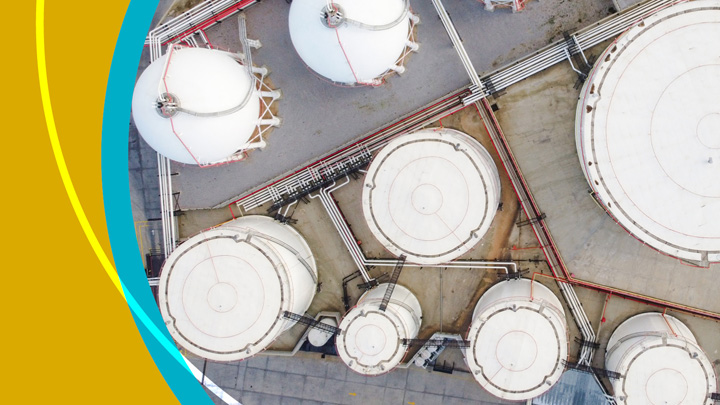Here’s What IT and Purchasing Teams Need To Know
What’s the cost of uncertainty?
In the oil and gas sector, there can be multiple days of downtime if you’re not 100% certain about the health of your assets. And the truth is, many industry organizations aren’t.
That’s certainly the case when it comes to a vital part of their operations: their compressor’s dry gas seal health.
Often, it’s not because they don’t have any data on how these assets are performing. They just don’t have enough of the right data — which can lead to wasted time and expense on repairs and shutdowns.
In the following article, I’ll share how a unique approach to tracking asset health can change all this — reducing downtime and potentially adding years to the remaining useful life of a mechanical seal.
But first, it’s worth briefly touching upon an important related point.
Doing More With Digital: The Case For Industry Transformation
In addition to the reasons mentioned above, investing in digital can play a crucial wider role in the oil and gas sector. It’s a point worth making because digital transformation can often feel daunting.
For instance, by tracking asset health, new digital monitoring tools can reduce reliance on physical inspections — a crucial benefit given the industry’s chronic skills gaps. They can also be scaled to multiple assets and use cases, delivering insights from around the operation that lead to organization-wide efficiencies and further increases in ROI.
Before explaining more, I’d like to share how the kind of tool I’m talking about can deliver real-world results.
Eliminating Seal Wear With Previously Hidden Insights
Recently, a global oil and gas producer we were working with faced an ongoing issue: frequent wear and tear on their drive end (DE) mechanical seal faces.
Every time they started up the compressor, the DE seal faces remained in contact for approximately 30 minutes, which led to excessive wear and shortened the remaining useful life of the seal.
With a lack of sufficient insight into their compressor start-up process, they weren’t able to address this issue, which is where we were able to help.
Using data from our John Crane Sense ® Turbo solution, this company was able to analyze the start-up process and identify a solution, which involved slightly increasing the slow roll speed.
This modification allowed for complete lift off of the DE seals, eliminating the unnecessary wear and, as a result, frequent disruption and replacement costs.
It’s an example of how granular insights can have a major impact on operations. And this same solution can benefit any oil and gas organization looking to protect their assets. Let me explain.
Changing What’s Possible With the Right Data
John Crane Sense Turbo is the industry solution that offers a unique bundle of sensors embedded into the dry gas seal.
Monitoring conditions at the heart of the compressor, it essentially acts as your ‘digital eyes and ears’, helping you protect your critical assets and improve the overall health of your operations.
Secure and Scalable
Crucially, it can also integrate with your existing systems to gather additional operational insights — and the sensors do not affect the operation of the dry gas seal in any way. In addition, the data collected by the sensors is encrypted at every stage to maximize security.
Here’s How It Works
John Crane Sense Turbo features a unique suite of sensors:
- Acoustic emissions sensor: This detects when there’s contact between the rotating and stationary faces of the seal, which could indicate wear or damage.
- Liquid presence sensor: This detects liquid leaks within the seal. It functions by sending a light signal through an optical cable. When interrupted by liquid, the system detects a change, indicating a leak.
- Temperature sensors: Two separate sensors help detect local temperatures in the seal during operation and potential temperature extremes that may exceed the operating or design limits of the seal.
How Can All This Benefit My Organization?
The data collected by the sensors is combined, processed by our John Crane Sense software, and sent to the cloud for storage and analysis. Your team can access this data in real-time from any device, and receive alerts and alarms if a potential issue is detected and needs investigating.
It’s very different from relying on basic data collected outside the seal, which is how most oil and gas companies understand what’s happening.
So, in practical terms, how can John Crane Sense Turbo benefit your operations?
Reduced downtime: It provides an accurate picture of your seal health, helping minimize unexpected failures and unnecessary downtime.
Extended seal life: Data analysis and pattern matching provide a deeper understanding of the seal’s remaining useful life, so you can take corrective action to extend its use.
Bridging skills gaps: By reducing the need for on-site checks and maintenance, John Crane Sense Turbo can help you do more with fewer people.
Improved reliability: It can identify potential issues early, helping improve the overall reliability of the compressor.
Cost savings: By understanding the remaining useful life of a mechanical seal, our solution could add months or years before equipment repair is needed, significantly reducing maintenance costs.
We Help You Protect What Matters
At John Crane, we have over 850,000 hours of dry gas seal monitoring, and we’ve helped oil and gas companies substantially reduce the costs and disruption of unplanned downtime while extending useful seal life.
To find out how we can help you, get in touch with us today.
Author
Adrian Conrad
Sense Product Manager, John Crane




